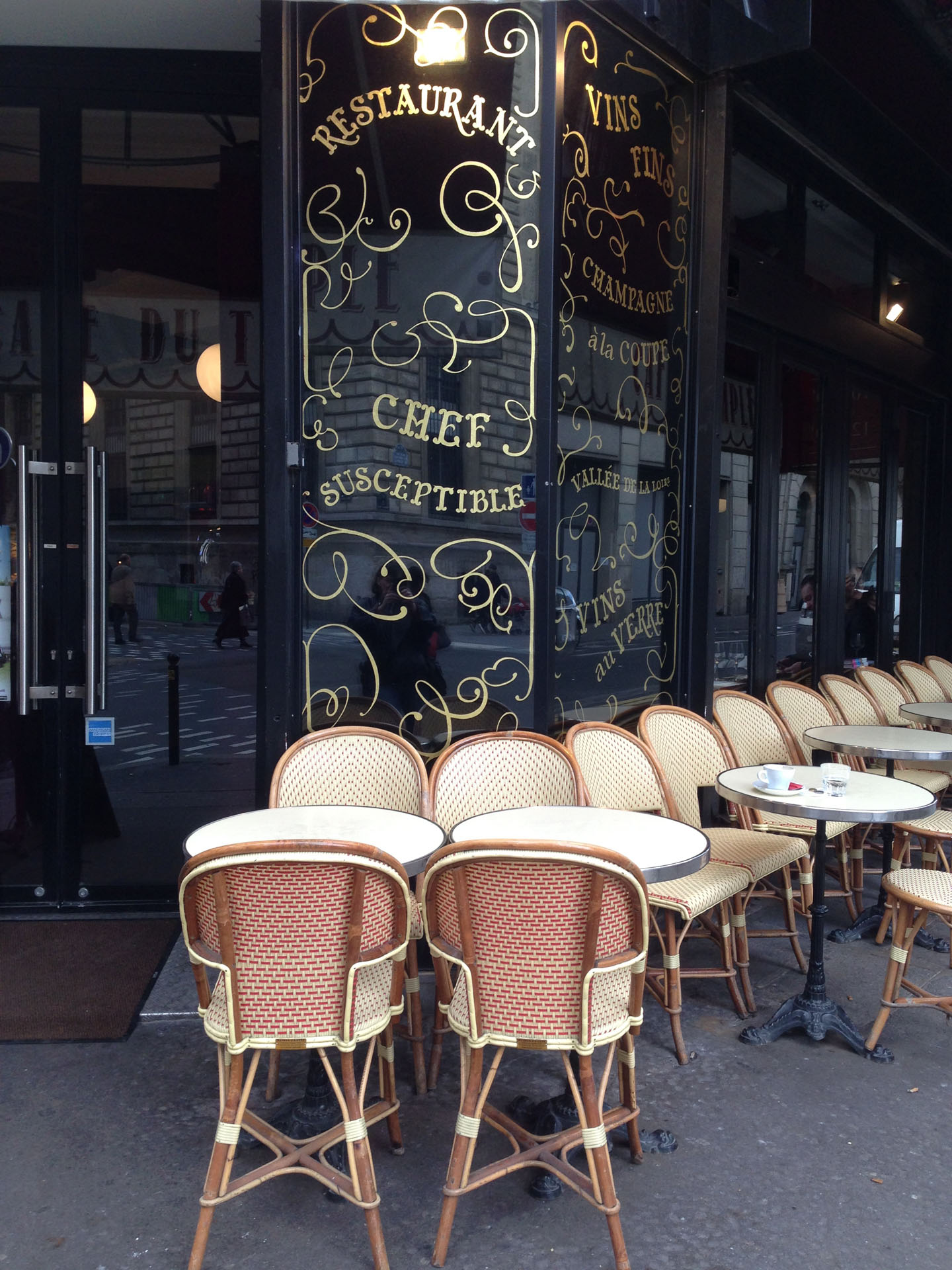I guess nostalgia can work both ways! I spotted this bi-national bicycle on rue du Grand Prieuré in the 11th arrondissement.
LOST IN ALMOND LAND
One of my favorite sights in the Central Valley of California is the blooming of almond trees in the early spring when the bare gray limbs disappear under a thick canopy of white blossoms. Almond production has increased at a frantic pace during the past two decades and new orchards sprouted in fields once planted with tomatoes or simply used as cow pastures. My ride to work takes me through country roads lined with dense orchards; this week, the low white skies and the thick white flowers enveloped me in a gauzy cocoon.
And yet, there is one almond orchard I still miss, the victim of another trend in the Valley: rampant urbanization. It was located in Manteca at the junction of SR 120 and Hwy 99, where the elevated off-ramp dips downward and curves South. Apartment buildings, storage units, and strip malls have replaced the huge almond orchard that was nestled within the ramp and extended as far as the eye could see.
On a clear February afternoon many years ago, Rick and I were driving back from San Francisco airport. As we left 120 to head home, my eyes lingered on the exploding blooms to my right, thick cottony pillows framed by deep blue skies. For a moment, I thought I was still on the plane, watching our descent from above the clouds and then through them. A second reentry. A second landing. Terra firma again.
NIGHT WALK
Exactly a year ago, Rick and I flew to Paris for few days before our long-planned visit with my parents in Gourdon. It was a few short months after the terrorist attacks. We enjoyed the luxury of a half empty Economy cabin in the plane. The crowds in the city appeared markedly sparser than usual. Conversations on the streets were conducted in French, not in English or Japanese. Reservations to our favorite restaurants were simply not needed. It felt a bit strange but nice.
We walked back to our hotel after an early dinner on the evening of our arrival and crossed the Seine on Pont des Arts. The pedestrian bridge has always been a popular spot for flâneurs at all hours of the day. That night it was eerily deserted. All the love locks had been removed from the metal screens and the views of the river were breathtaking. Save for one woman sitting on a bench and admiring the reflections on the water, we had the bridge to ourselves. It felt a bit strange but nice.
Vocabulary
Le flâneur: one who walks leisurely
CHEF SUSCEPTIBLE
And all this time, your biggest concern was a “rude” waiter! Kidding, just kidding: you must watch out for the chef, too. Bistro on rue du Faubourg du Temple, 11th arrondissement.
Vocabulary
Susceptible: oversensitive
SHOOTING THE SHOOTER
Sometimes the photographer becomes the subject. Palais Royal in the first arrondissement ranks as one of the most popular locations for photo shoots: the juxtaposition of classic architecture and modern elements (the often decried Buren columns) provides interesting props.
MAPS-THE GAME
When you’re a frequent Paris visitor, it’s easy to get sucked into your comfort zone: you stay at the same hotel or apartment; you have your favorite neighborhood and know exactly which pastry shop has the most succulent tarte au citron; you’re on a first-name basis with the chef who runs that great bistro you love so much.
I understand the attraction: you don’t want to be a mere tourist; you want to belong. I’ve been guilty of doing that myself. So, let me tell you about this little game I’ve been playing for a few years. I picked up two of the free maps that you routinely find at the airport or in hotel lobbies (they usually advertise the Galeries Lafayette department store.) I unfolded one of them, cut the city map along the grid, and obtained about 120 squares. I did allow myself to discard those on the outer edge where the only place of interest was the boulevard périphérique… Each one measures about 1.25” x 1.25” and I keep them all in a box. Before each visit, I pick one. Randomly. Then I make sure to devote at least half a day to explore my “assigned” area, trying to walk every little street, paying attention to architectural details, looking for surprising places, and taking photos of what I encounter.
I keep the second map as a reference so I can easily spot where my square fits overall: some of the mostly residential areas can be hard to locate when they don’t include part of the river or a recognizable monument. Once I know where I’ll be walking, I make a copy of a real street map of the area and take it along: I can always see the “boundaries” of my square and don’t need to rely on a phone app. I strongly recommend Paris 3 Plans par Arrondissement (which is a bit hard to find these days) but I’ve also used the Michelin Paris Plan (royal blue #11.)
You can also decide to explore beyond the strict limits of your square: it usually makes sense to cover the length of a street or walk around a whole park. Whether you consult guides, prepare your itinerary, or just go blindly is entirely up to you. Either way, I’m sure you’ll make unexpected discoveries. Give it a try!
Vocabulary
Tarte au citron: lemon tart
Boulevard péripherique: the beltway circling around the city






